
Anatomy Of Back Organs / Anatomy Male Organs in Loop Stock Footage
Dog anatomy comprises the anatomical studies of the visible parts of the body of a domestic dog.Details of structures vary tremendously from breed to breed, more than in any other animal species, wild or domesticated, as dogs are highly variable in height and weight. The smallest known adult dog was a Yorkshire Terrier that stood only 6.3 cm (2.5 in) at the shoulder, 9.5 cm (3.7 in) in length.

Dog Anatomy Internal Organs Stock Image Z932/0462 Science Photo
Canine anatomy Dog skeleton Muscles of the dog Organs of dogs Canine anatomy As we explain above, canine anatomy is far ranging due to the diversity of existing breeds. These different breeds not only differ from each other in size, but in the shape of many body parts. Perhaps the most significant is head shape.
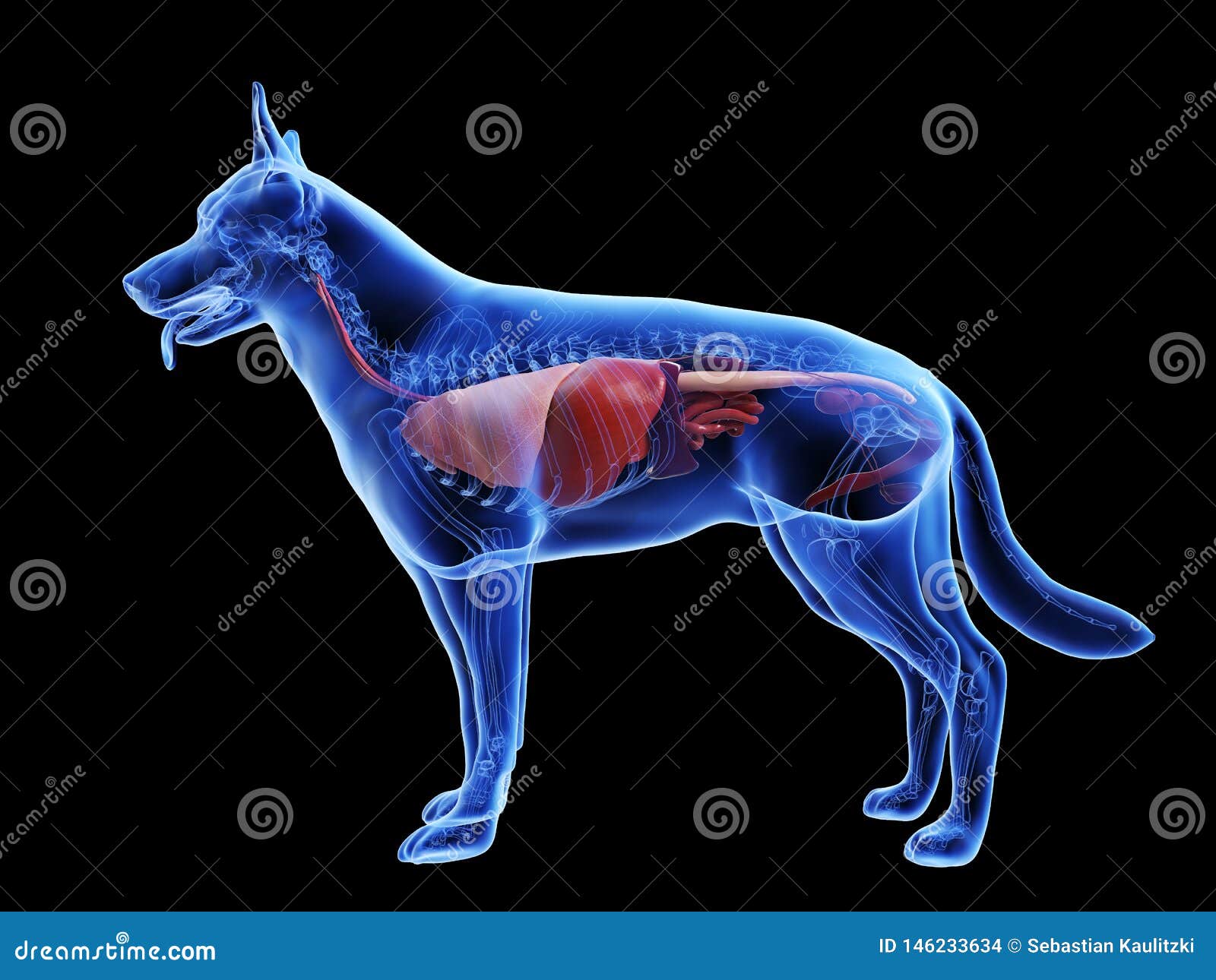
A dogs internal organs stock illustration. Illustration of medical
Give the Gift of Independence this Holiday Season. Donate to our Christmas Appeal today! Help Us Change Lives. Your Donation can Provide Freedom and Confidence to Someone in Need!

an animal's skeletal and muscular muscles are shown in this diagram
On the left side view of a dog's internal organs, you can see the lungs, heart, liver, stomach, spleen, kidney, intestines, bladder, and the rectum in that order from front to back. You can also view the spinal column and the brain. Laurie O'Keefe Dog Anatomy Organs Right Side

Dog Internal Organs Anatomy Anatomy of a Male Dog Internal Org Buy
Quick idea: in this article, you will learn the location of different organs from the different systems (like skeletal, digestive, respiratory, urinary, cardiovascular, endocrine, nervous, and special sense) of a dog with their important anatomical features.

Dog Muscle and Internal Organs Chart Clinical Charts and Supplies
Canine Internal Anatomy Chart / Poster - Laminated. (2 Reviews) Write a Review. Item Number: COG100. In stock. Delivery: 3 - 5 working days. Large laminated wall poster illustrating the internal anatomy of a dog and the major organs. £18.00. Inc VAT.
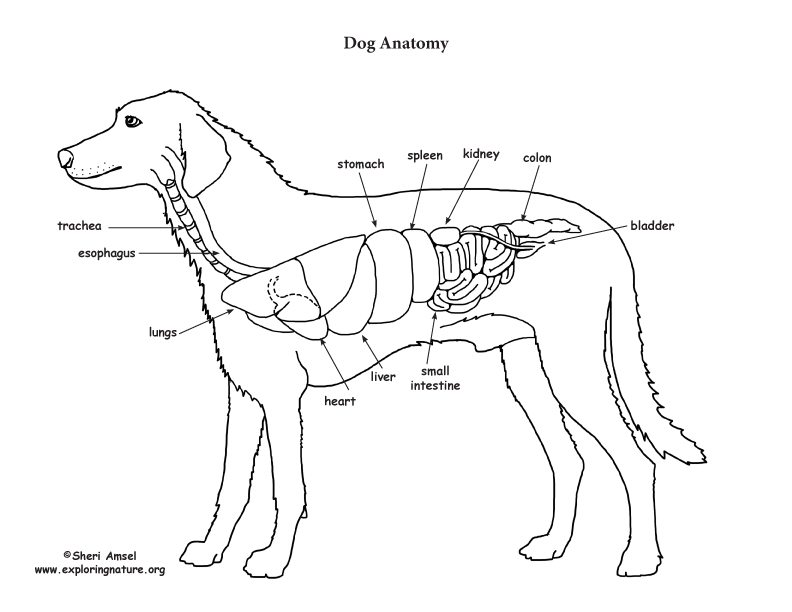
Dog Anatomy (Thoracic and Abdominal Organs)
Our 3D anatomy application is a fully-featured virtual reality anatomy atlas. It is an immersive self-discovery experience into animal body’s. You can manipulate bones, muscles, vessels, organs and other anatomical structures. Examine them closely from all angles, read their anatomical terminology and read descriptive texts. Delve into the body systems, peek under the skin, and see what.
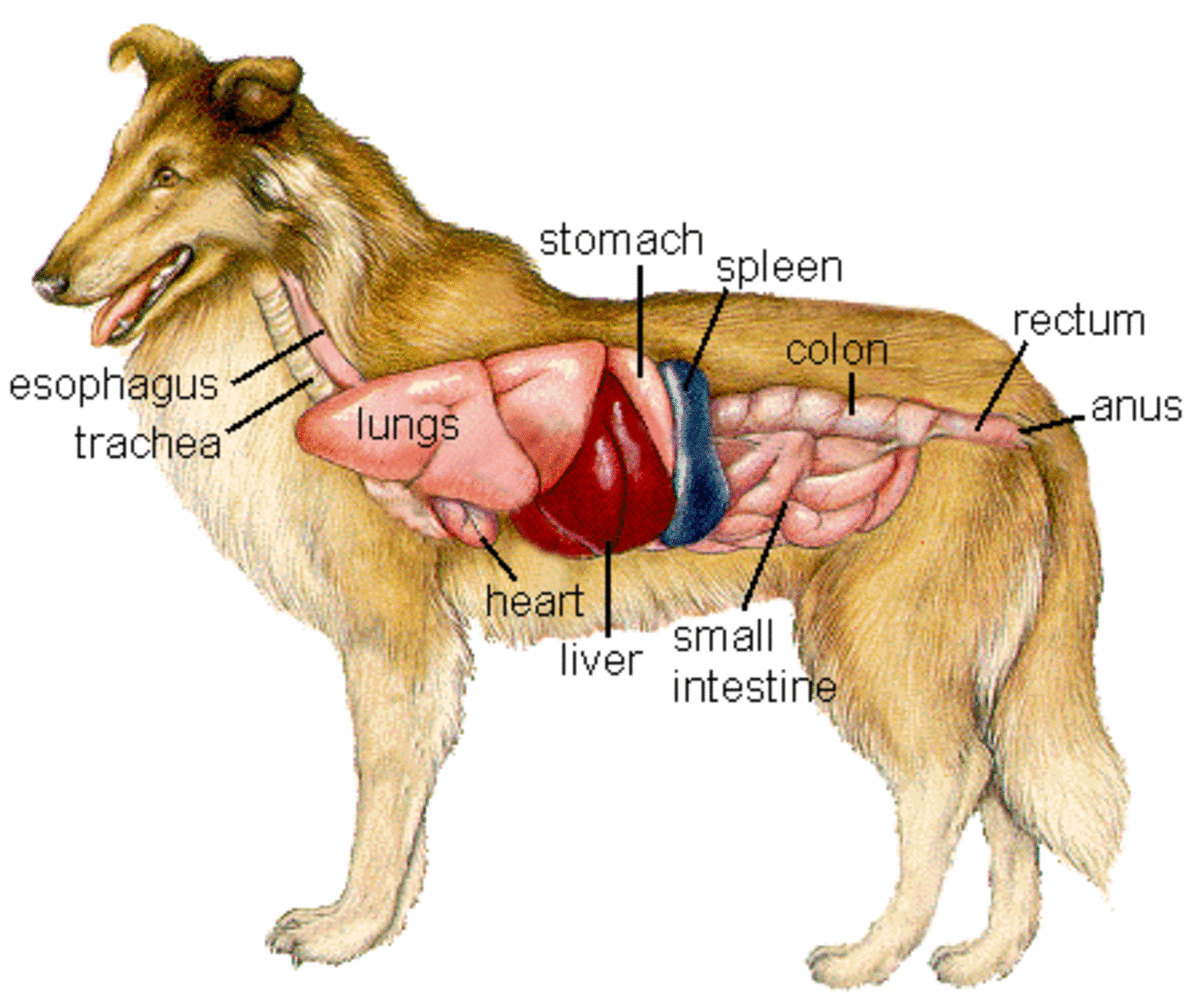
Coughing in Dogs May Signal Heart Disease HubPages
Xiphoid region (Cranial abdominal region) Zygomatic bone. Zygomatic gland. Zygomatic region. Radiographic anatomy: labeled images in the transverse plane of a healthy dog's whole body, using tomodensitometry. Introduction to the anatomy of the skull, thorax, abdomen, pelvic cavity, muscles and blood vessels: main anatomical structures identified.

Dog Internal Organs Anatomy Anatomy Of A Male Dog Stock Photo
A dog's limbs, paws, and claws are marvels of evolutionary adaptation. Dogs usually have four toes on their rear paws and five on their front paws (including the dewclaw). The structure of the limbs and paws allows for a range of movements, from rapid acceleration and deceleration to agile turns and jumps.
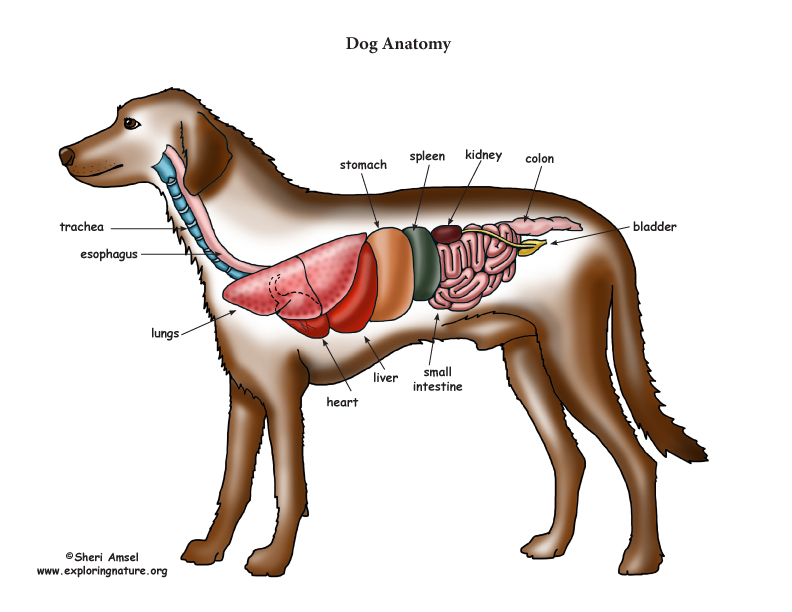
Dog Anatomy (Thoracic and Abdominal Organs)
Veterinary anatomy - Animal: ANATOMICAL PARTS Abdomen Abdominal aorta Abdominal mammary gland Abdominal mammary region Accessory carpal bone Acromion Adductor muscle Ala of ilium; Wing of ilium Ala of nose Anconeus muscle Antebrachial region Aortic arch Apex of nose; Tip of nose Arm
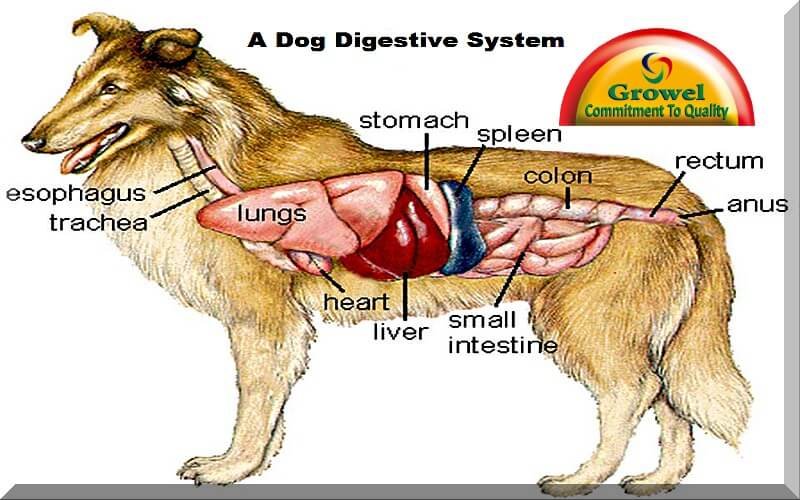
A Dog Digestive System Growel Agrovet
Internal anatomy of a dog: carnivorous domestic mammal raised to perform various tasks for humans. Encephalon: seat of the intelluctual capacities of a gog. Spinal column: important part of the nervous system. Stomach: part of the digestive tract between the esophagus and the intestine. Spleen: hematopoiesis organ that produces lymphocytes.
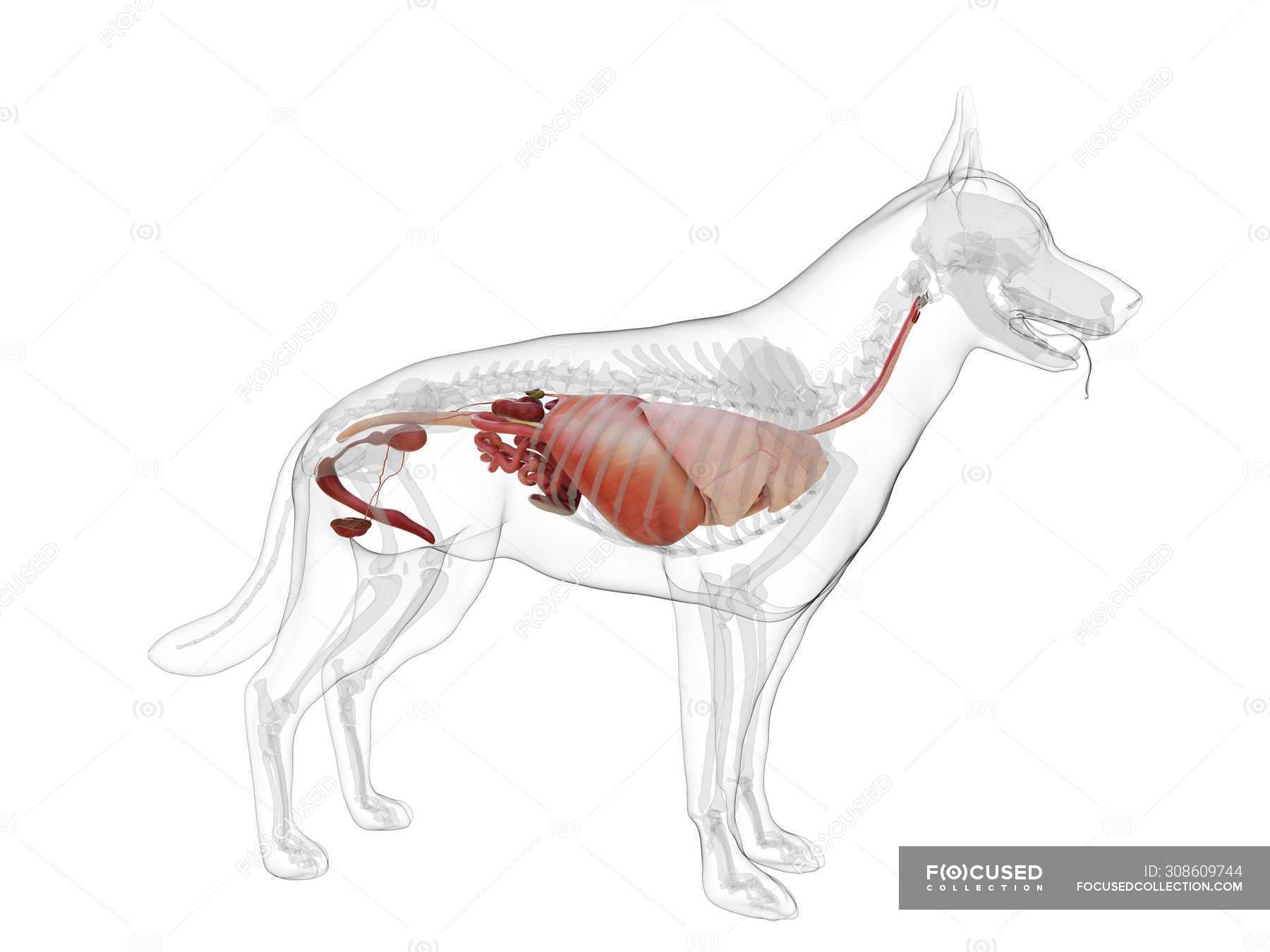
Dog anatomy with visible organs on white background, digital
External Anatomy Dogs, like all mammals, have eyes, a nose, a forehead, and ears. The only difference is that their noses are cold and wet, and their ears can be either dropped, erect, or cropped, depending on the breed. They also have a throat, a flew (the upper lip), chest, fore and hind legs, back, stomach, buttocks, and a tail.

Anatomy of a male dog crosssection, showing the skeleton and internal
Dog Anatomy - Internal Organs. Z932/0462. Rights Managed. 14.9 MB (591.0 KB compressed) 2592 x 2004 pixels. 21.8 x 17.0 cm · 8.6 x 6.7 in (300dpi) Request Price Add To Basket ADD TO BOARD.
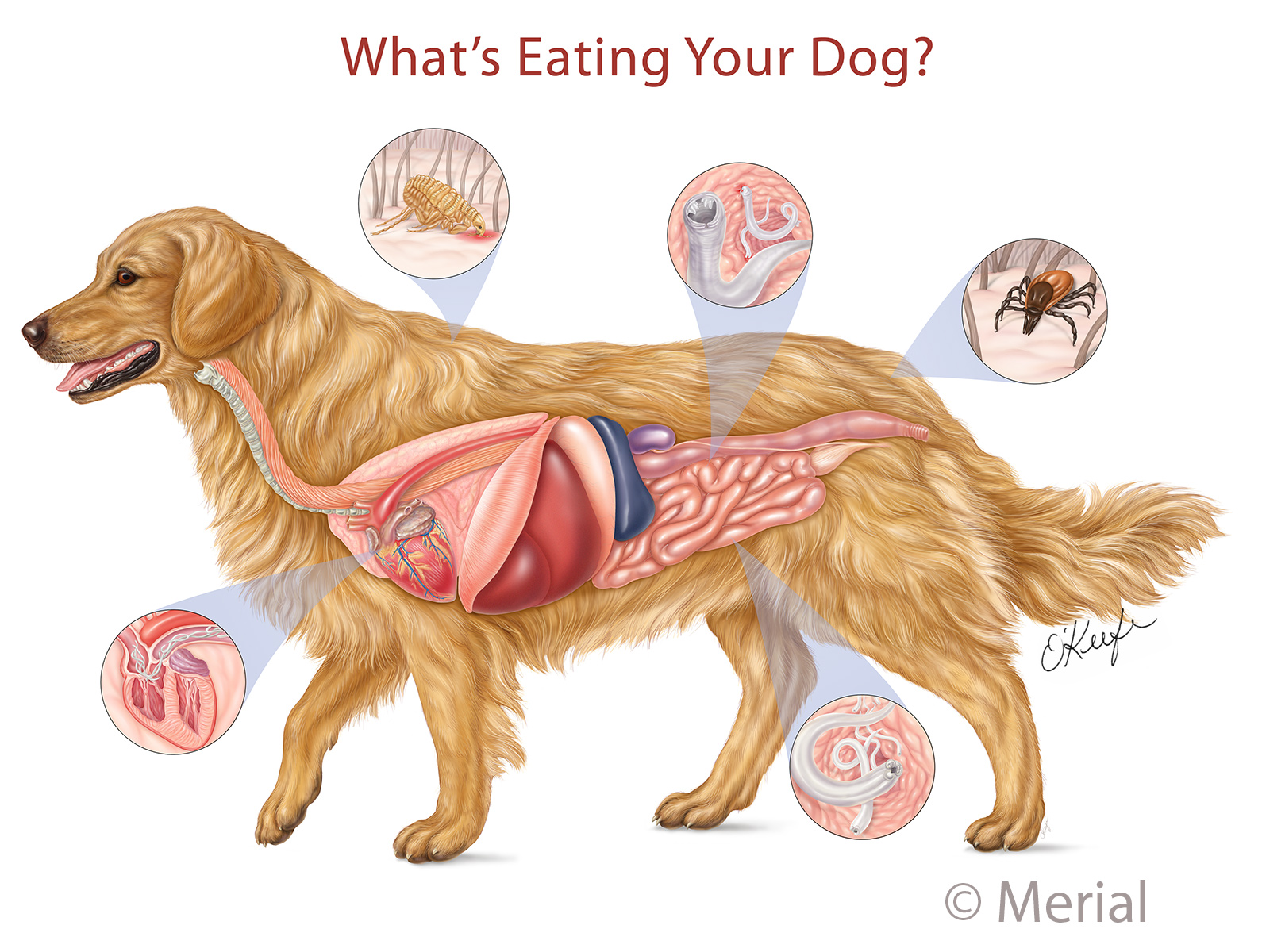
dog anatomy Archives Laurie O'Keefe Illustration
We will be covering the most commonly used body parts of a dog, including the abdomen, throat, back, nape, belly, brisket, wrist, chest, prosternum, croup, claw, ear, elbow, and many more. Our aim is to provide you with a comprehensive understanding of the different parts of a dog's anatomy. This knowledge will help you identify any potential.
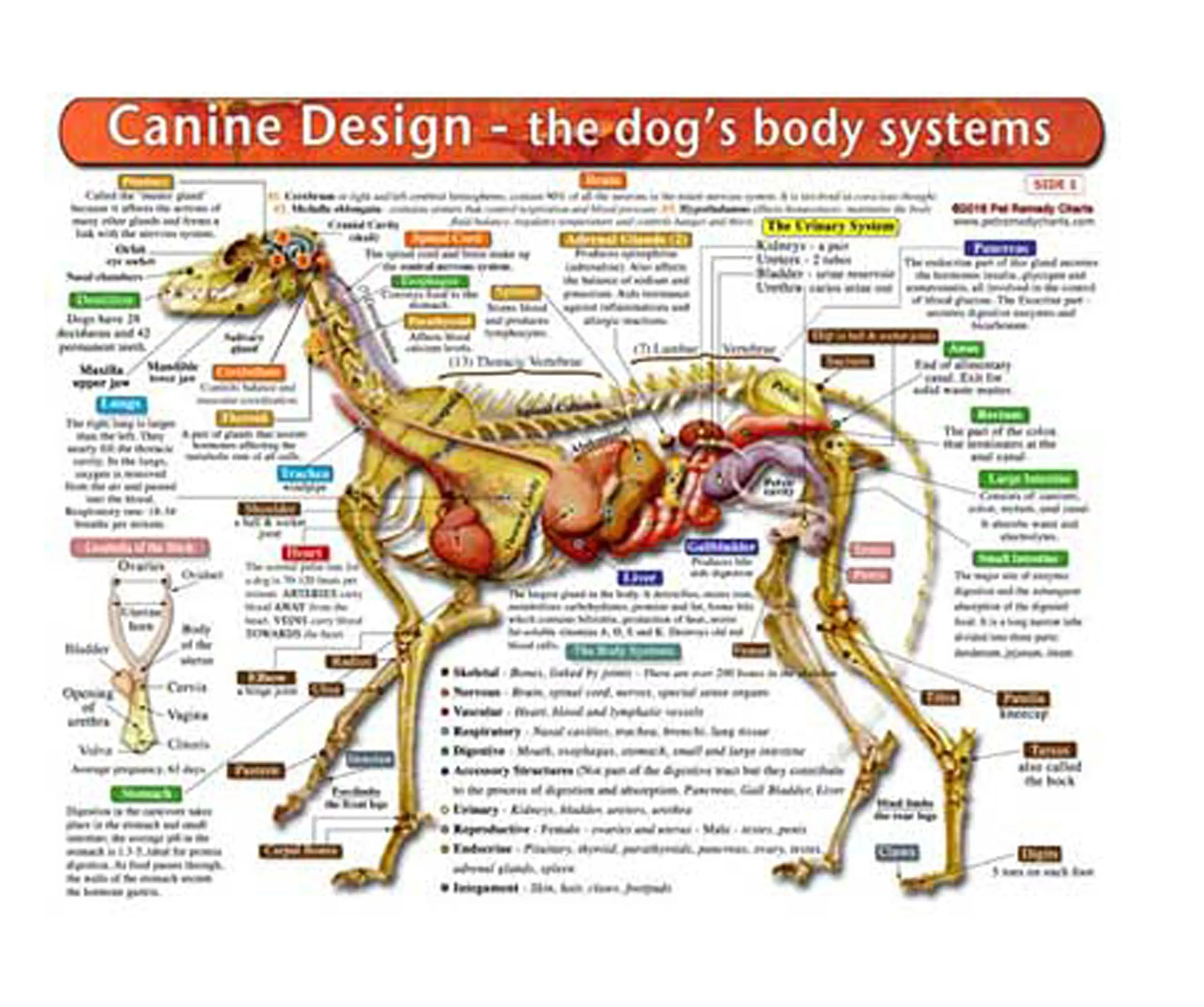
Buy The Dogs Body Systems A DoubleSided, UV Protected, Laminated Dog
One of the most important parts of a dog's anatomy is their skeleton. A dog's skeleton is made up of many different bones, which provide structure and support for their body. Dogs have over 300 bones in their body, which is more than humans who have around 206 bones. Their skeleton includes their skull, spine, ribcage and limbs.
finearts304 dogs organs
Hearing: Dogs have a greater hearing range than people do. They can detect sound as low as 16 Hz frequency to as high as 100,000 Hz (people hear 20 to 20,000 Hz ).